I’ve included fees in solas (S/) when I had recorded them.
Lima
Lima is definitely worth a few days not only to recover from your travel, wherever you may have started from. The Miraflores area, especially on the clifftops and the Malecon with the parks, view of the beach and ocean below, running and walking paths, public sculpture, and some of the architecture on the near-by streets is a good place to spend a few hours. An excellent restaurant in the area is Alfresco, with the best ceviche we had, and in a country known for its ceviche. It’s located at the corner of Avenida Oscar Benavides and Calle Victor Fajardo, about 3 blocks up from the Malecon area.
A little further up from Alfresco is the ticket office and bus stop for a reasonable ½ day sightseeing trip of old Lima. The tour cost S/70. Generally the office is in the Parque Kennedy (aka Central) but there was construction going on there and it was moved to a temporary structure on Benavides.
If you go nowhere else in Lima, visit the Larco Museo (S/25). Beautiful setting and well-designed and interesting museum (beyond the explicit, erotic ceramic figures, which are a curiosity). Also, we recommend the Museo Nacional Arqueología, Antropología e Historia Perú. Be aware that the Museo de la Nación, which sounded quite interesting in our Rough Guide, does not exist. It’s been combined with the previously mentioned museum.
It’s easy and inexpensive to get around by taxi in Lima, but determine the price before you get in and make sure it is a legitimate taxi.
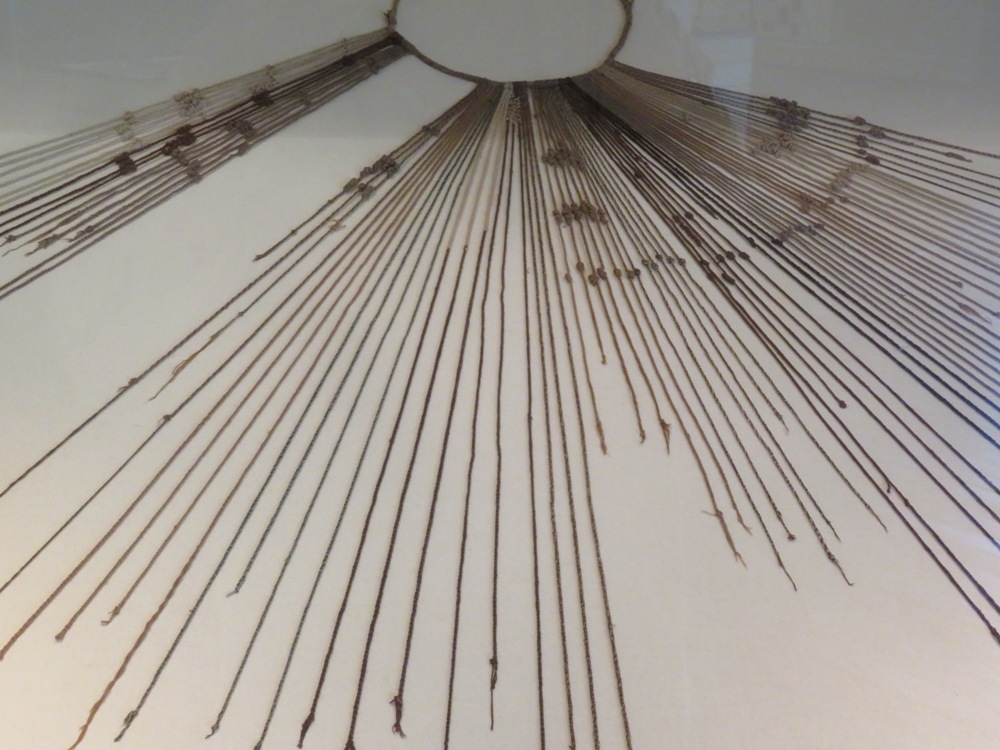
An original quipu, an Incan accounting and measurement system in one of the Lima museums.
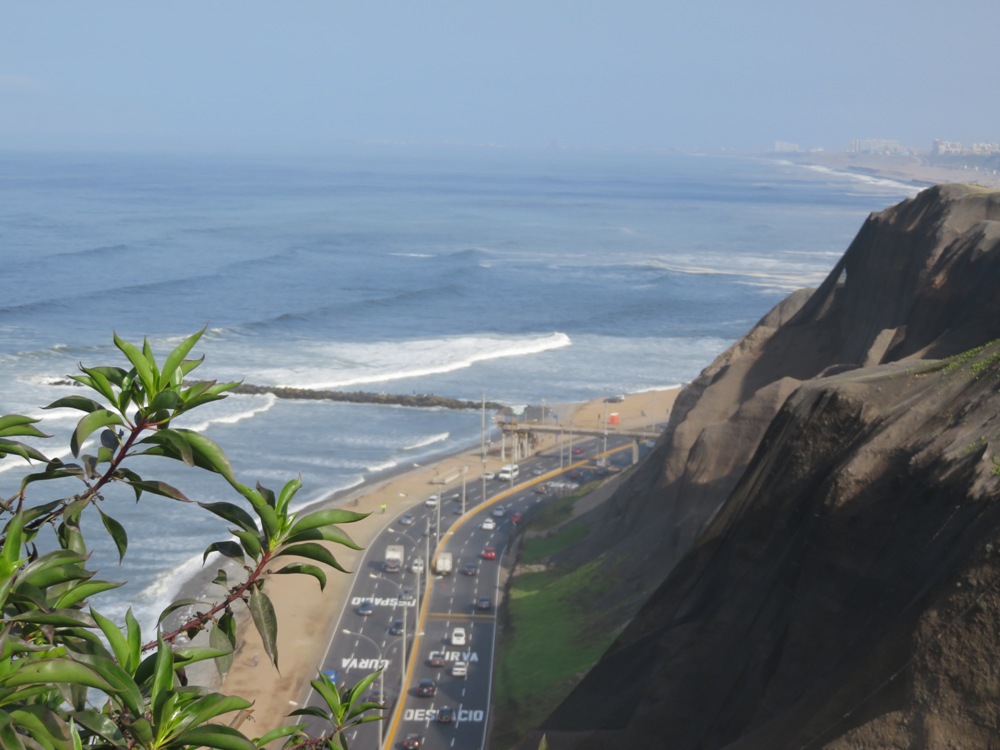
View from the Miraflores cliffs.
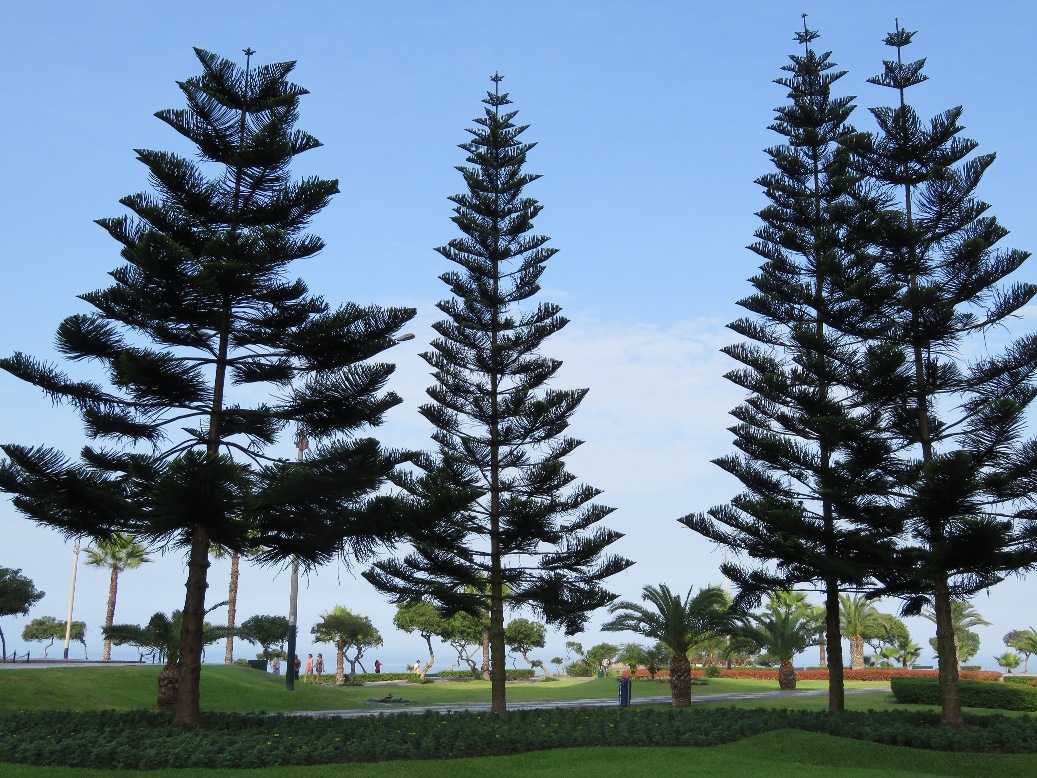
A Miraflores cliffside park.
Nazca
This is really worth a visit for a fly-over of the Nazca Lines and to learn about Maria Reiche, the German mathematician and archeologist who dedicated her life to protecting and learning about these enigmatic lines. We flew with Alas Peruanas, but I’m not sure it makes any difference. As part of our ticket, we were picked up at our hotel and driven back. The flight is about 30 minutes, but you get a good idea of the Lines. Go in the morning as the visibility and smoothness of the flight is generally better. There is an additional fee of S/25 just to use the airport.
The Lines themselves are so extensive as to stun the imagination. The entire site covers about 190 square miles. One of the aspects that surprised me was how many of the Lines were just that—lines, including triangles, or perhaps gigantic pointers? There are also shapes known today as the owlman, monkey, hummingbird, spider, whale, and many others. The hummingbird, for example, is 310 feet long!
They were probably created by the Nazca culture between about 500 BCE and 500 CE. They were probably of religious significance and included knowledge of the solstices in terms of how some of the lines are pointed. They were created by removing the reddish-brown stones and pebbles to reveal a lighter, almost white, clay-type earth underneath, so they were protected not just by the aridness of the area and its seeming inhospitableness, but by the little ridges of the removed rock around the perimeter of each line. It staggers the imagination at how long and arduous a task this must have been.
We also went to the Planetarium Maria Reiche that evening (S/20), and the next morning went to the Maria Reiche museum (S/5) that is out of town. If you’re going with children or know any that would be interested in this fascinating story and part of pre-history, I highly recommend Maria and the Stars of Nazca / Maria y las Estrellas de Nazca (Bilingual Edition) by Anita Jepson-Gilbert.
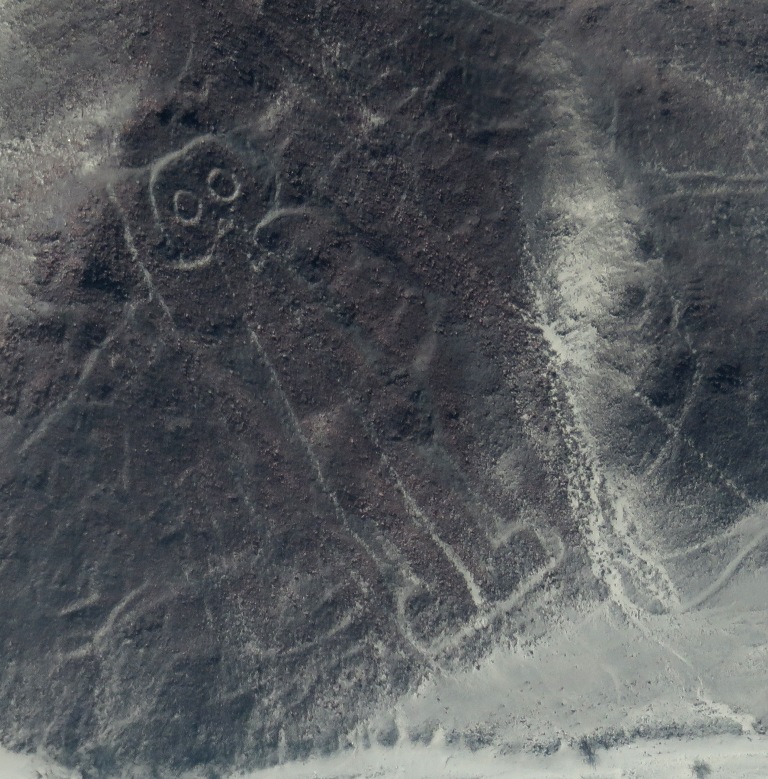
Owlman.
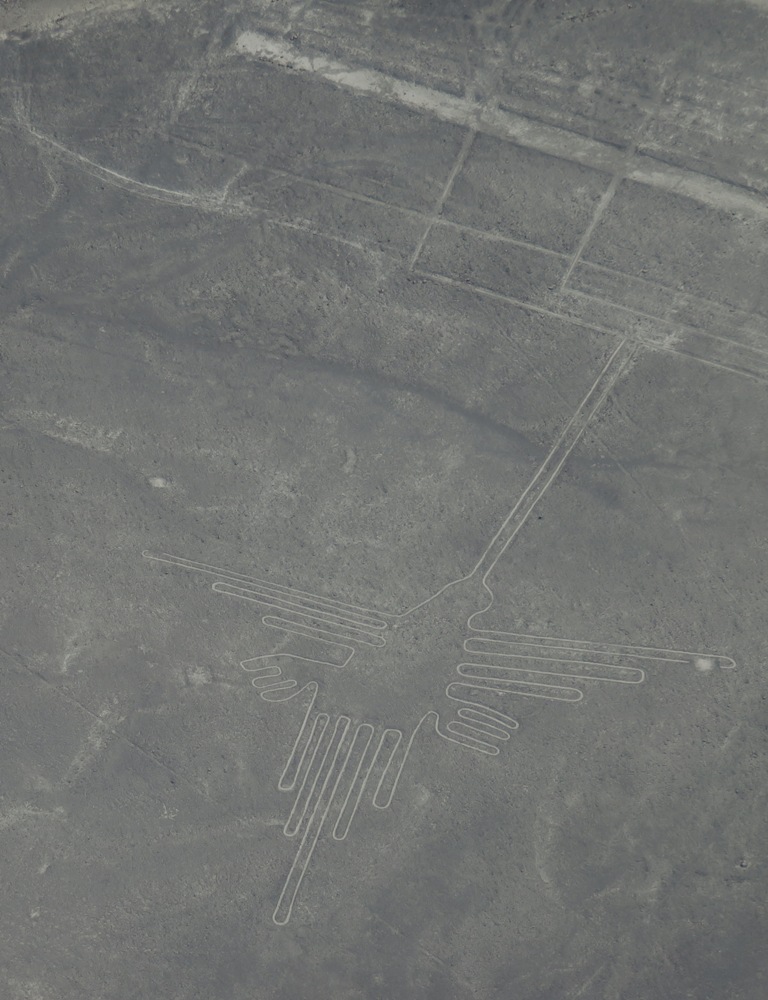
The Hummingbird.
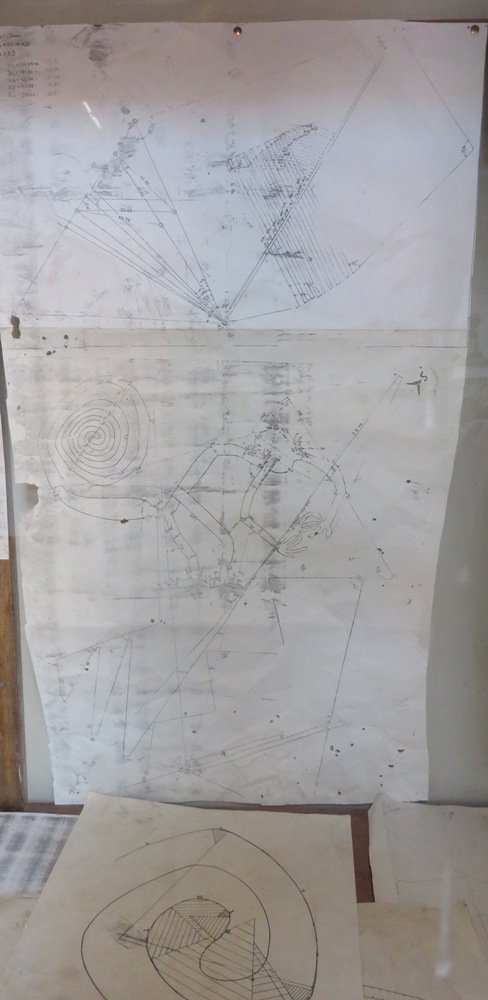
Example of Maria Reiche’s work displayed at her museum.
Peruvian Coast
We drove from Lima south on the Pan-American Highway (1S) to Camana where it goes inland and where at Reparticio we turned to go east to Arequipa. The coastal area from Lima to Camana is bleak with immense quantities of sand blown inland to form not just hills but mountains of sand, with bulwarks to keep it from covering the road in many places.
The few beaches we walked on where full of refuse and broken glass (not the good sea glass type), plus there is the wind. There may be a time of year when it isn’t blowing, I couldn’t say. In this stretch of the Pan-American Highway for a ways south of Lima there are desolate-looking resort areas with their token of green grass and landscaping indicating incredible misuse of water, interspersed with congested, refuse-strewn towns. Peru is certainly not an undeveloped country or even a developing country, it is quite beyond such categories, but we found this area quite uninviting. This is also where we were stopped both going and returning by the extortionist police. I’ll repeat that story, which I included in an earlier blog in case you missed that.
The only “theft” we experienced was from a group of extortionist POLICE, who operate south of Lima on the Pan-American Highway (1S) before Chinca Alta. Unfortunately I did not make a note of the exact location. They have a roadblock, as the police do in many locations, but here they presumably charged Wayne an exorbitant amount for speeding, which he was, but going the same speed as all the rest of the traffic. They never gave him an actual ticket, just took the money and pocketed it. The same thing happened on the way back some weeks later, this time for not having his full lights on, only his parking lights (one must have the headlights on when driving in Peru), but after 20 minutes of my arguing with them in broken Spanish, they gave up on us and let us go. In other roadblocks when we showed them our rental car papers, they waved us on. Interestingly, in the Dominican Republic, the police make their money in much the same way, but they just take some change from locals and wave tourists on, knowing not to harass the tourists who help their economy. Obviously the Peruvian police think because we don’t know any better we’ll pay, and the first time they were right, but it does leave a very negative impression.
But what I will remember the most of this part of Peru is sand!
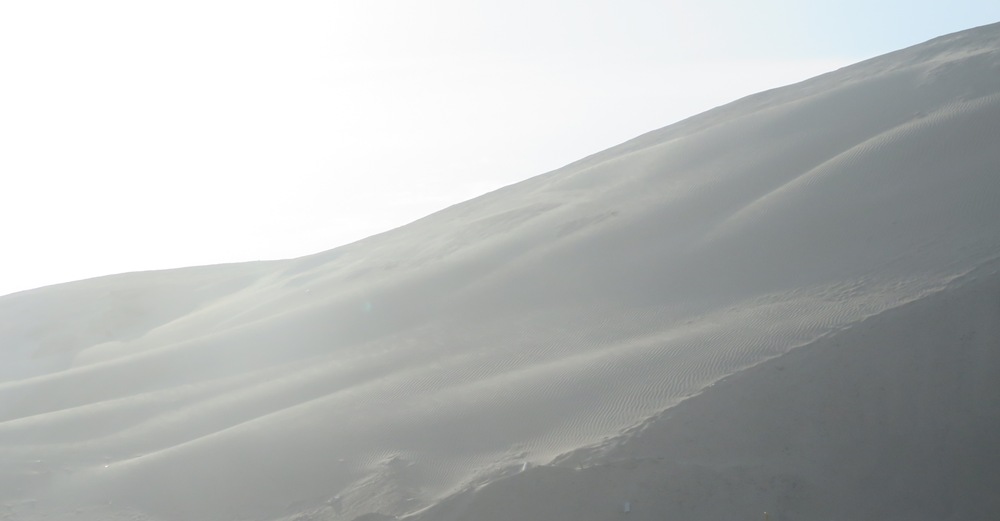
These are not just sand dunes, these are hills leading to mountains of sand!
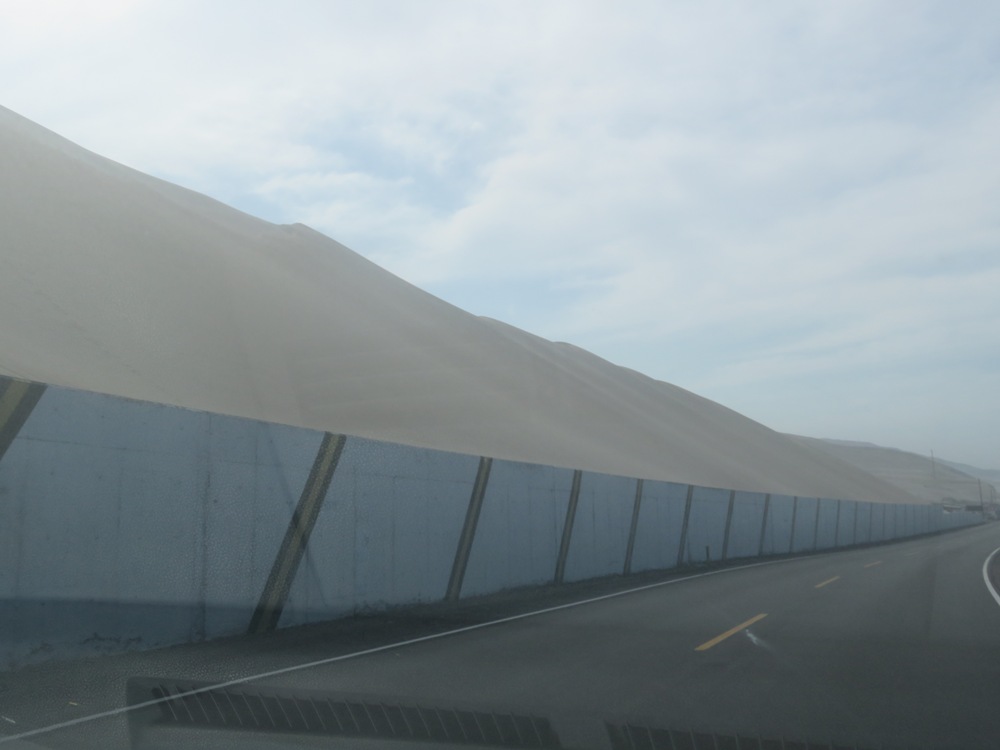
Attempting to keep the sand from inundating the highway.
